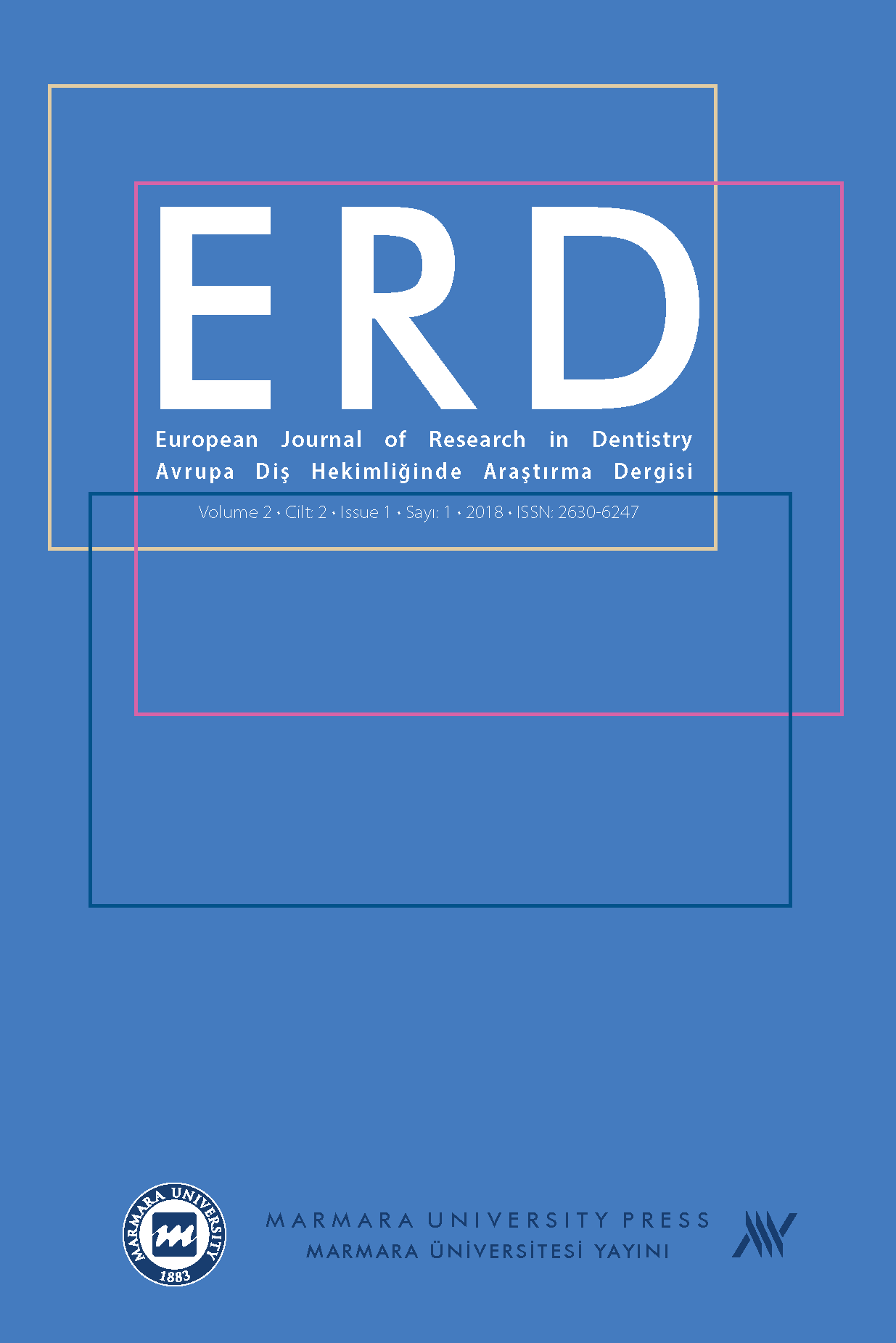Farklı Polimerizasyon Prosedürlerinin İndirekt Rezin Restorasyonlarının Renk Kararlılığına Etkisi
İndirekt kompozit rezin, polimerizasyon prosedürleri, renk kararlılığı, boyama solüsyonları, CIELab sistemi
The Effect of Different Polymerizatıon Procedures on Color Stability of Indirect Resin Restorations
indirect resin composites, polymerization procedures, CIELab, color stability, staining solutions,
___
- Referans1 Ardu, Stefano, et al. 2010 A long-term laboratory test on staining susceptibility of esthetic composite resin materials. Quintessence Int .41(8). Referans2 Arocha, Mariana A, et al.2014 Colour stainability of indirect CAD–CAM processed composites vs. conventionally laboratory processed composites after immersion in staining solutions. J. Dent. 42(7):831-838.
- Başlangıç: 2015
- Yayıncı: Marmara Üniversitesi
Farklı Polimerizasyon Prosedürlerinin İndirekt Rezin Restorasyonlarının Renk Kararlılığına Etkisi
Duygu TUNCER, Selin POLATOĞLU, Hilal ÜNVER, Çiğdem ÇELİK
Eksternal Apikal Kök Rezorpsiyonunun Mineral Trioksit Agregat İle Tedavisi: İki Vaka Raporu
Dilan Pelin YILDIRIM, Selin GÖKER KAMALI, Merve AYTÖRE KOŞAR, Hesna SAZAK ÖVEÇOĞLU
Diş Eti Oluğu Kanı ve Tıbbi Diagnostik Değeri
Unilateral Dudak-Damak Yarıklı Erişkin Hastada Estetik Tedavi: Olgu Sunumu
Elcin KESKİN ÖZYER, Mine HELVACİOGLU ÖZKARDEŞ, Erkut KAHRAMANOĞLU
Dişsiz Mandibulada Rezidüel Kret Rezorpsiyonu İle İlişkili Uyuşuk Çene Sendromu: Bir Olgu Sunumu
Melda Pelin AKKİTAP, Birsay GÜMRÜ, Sevilay DEVECİ, Ender İDMAN
Temporomandibular Rahatsızlıkların Tedavisinde Botulinum Toksin Kullanımı
Hatice Banu UYSAL ÖZEL, Yılmaz Umut ASLAN, Erkan SANCAKLI
Dihidropridine Bağlı Dişeti Büyümesinde Farklı İlaç Rejimlerinde Periodontal Tedavi Yaklaşımı
Onur EROĞLU, Ece YETİŞ, Hafize ÖZTÜRK ÖZENER, Leyla KURU
Oklüzal kuvvetin oklüzal temas yüzey alanı ve yoğunluk ile değerlendirilmesi: Ön çalışma
